July 29, 2013
This post over at CDR Salamanders got me to thinking about what the hell we might build to replace the FFG7s that's not the aluminum coffin that is the LCS.
As I have not slept much, these two thought resulted in this post...
The Oliver Hazard Perry class Frigates were much maligned in their day and are muh longed for in ours. They had a mediocre armament of a single standard missile launcher, a 3" gun forced on the navy by congress and 6 lightweight torpedo tubes. However they also had two helicopters and those, in combination with the ships hull mounted and towed sonars, made the vessel a formidable ASW craft, especially if operating in concert with one or more of her sisters. They also made the ship very useful for the peacetime roles the USN found itself required to play after the war everyone feared did not come to pass.
The were reliable, seaworthy andwere a bit faster than designed so they could be used with even the nuclear carriers in a pinch. USS Stark and USS Roberts proved the design could survive remarkable damage, though especially in the case of USS Stark the folly of using aluminum in the superstructure of a warship was relearned at great price.
These ships had little growth potential and were designed as cheap ships to pad out the numbers and complement the more expensive destroyers and cruisers.
Well they are at the end of their service lives now and the USN is replacing them with the Littoral Combat Ship.
Originally conceived as a corvette or fast attack craft with swappable mission modules and helicopter capability that could be built in great numbers due to its low cost, the LCS grew in cost to ludicrous proportions. It does have some some impressive characteristics though .
Firepower of Coast Guard Cutter,
Speed of cigarette boat,
Cost of European destroyer
Engines that keep on not working right, 5 YEARS after commissioning.
" Look Ma! NO SONAR! "
Fiendishly difficult to clean
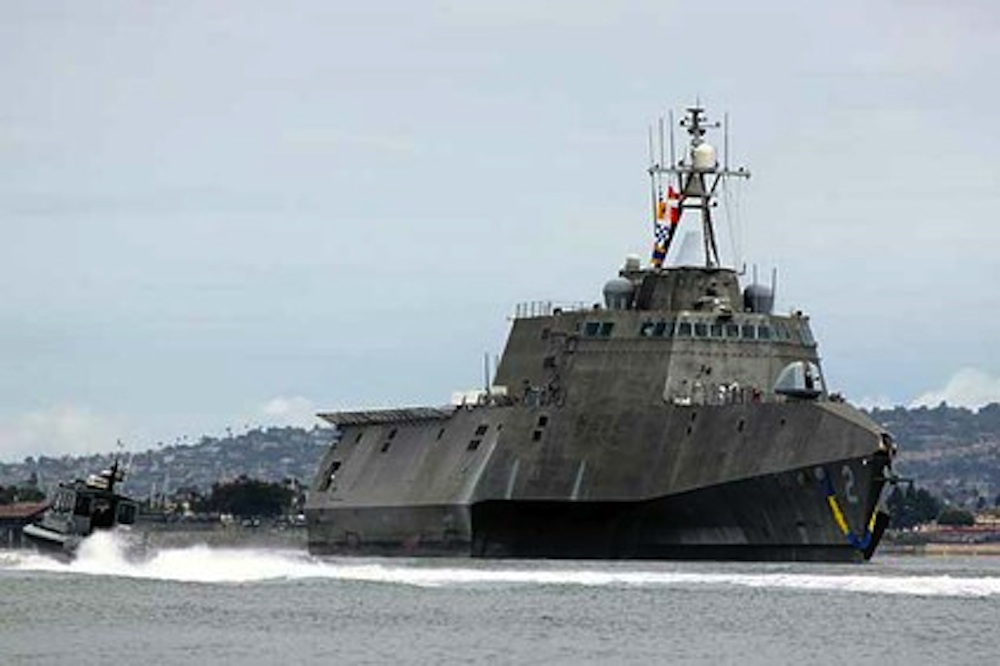
Of course, those characteristics tend to impress in the wrong way.
Additionally, there are two distinct classes because the navy couldn't decide which one sucked more and in fairness, both designs have their own unique shortcomings, (such as improperly fitted zincs) that they each bring to the table.
They do have two good points, particularly the trimaran design. They have very good aviation capability and a large working deck. However, no amount of tweaking is ever going to make them effective and especially not cost effective in ASW.
The navy needs numbers of ships, because a ship can only be in one place at a time. That is important for showing the flag and maintaining a presence in peacetime, it is even more so when dealing with submarines, and anti-submarine warfare is something that is becoming increasingly important as many navies acquire modern diesel electric submarines. The USA is a merchant republic and sea control and convoy protection are vital.
So whatever we buy to replace the LCS needs to be cheap enough to buy in numbers....during a decade we are likely to be very broke, with money left over after we spent it all on LCSs.
An all steel version of the OH Perry class might fit the bill, but adding a steel superstructure would require a complete redesign. We also need to remember that cost has to be kept down so only additional capability that can be had at minimal cost should be considered.
First off, what does an ASW vessel NEED?
Sonar (towed and hull)
Torpedo tubes
Helicopters.
4 helicopters are the absolute minimum for maintaining one helicopter on station at all times so 5 seems like a good number if we can get it. But could one carry 5 helos on a frigate/destroyer sized hull?
Well, some years ago the German shipyard Bremer Vulkan put forth an idea for a helicopter capable Offshore Patrol Vessel. Here is a screencap of their brochure
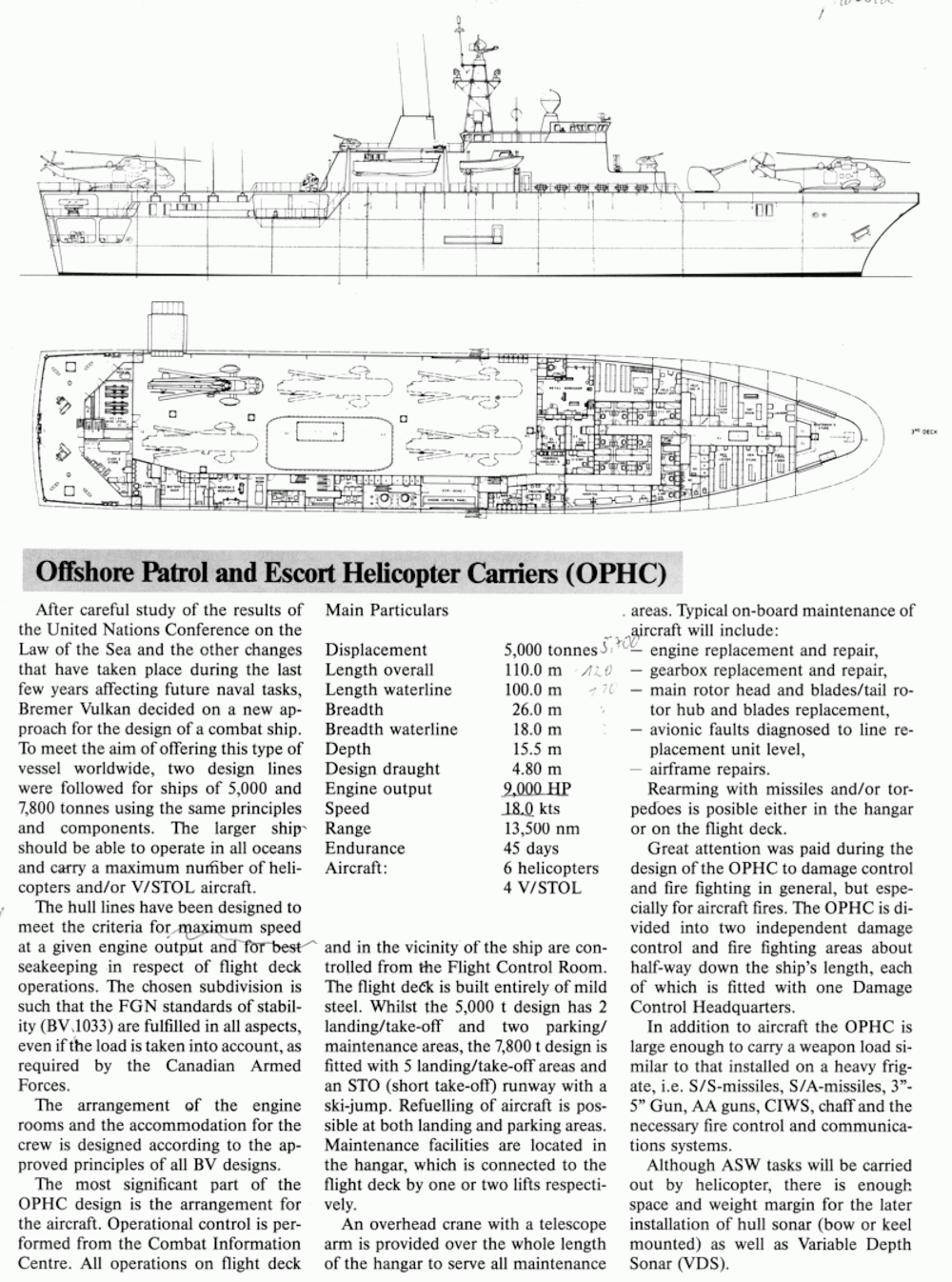
There is a sketch of a 6000 ton vessel in the same design series but no brochure available.

AAA systems needs a fire control system, and here is where these things go off the rails cost wise. I'd keep it very austere, though the low end SPY-1K of the aegis system (designed for corvettes) might be acceptable and could leverage existing logistics and training..
No ABM capability for this ship, just point defense and the limited area defense that ESSM implies. Minimal ECM would be carried.
The above vessel is fitted with a French 100mm gun, but the brochure indicates that guns of up to 5 inches are doable, and indeed the MK 45 was designed with ships as small as 600 tons in mind. Putting one on the bow would help keep people from thinking of the ship as a carrier (which it most assuredly is not) and provide it with the useful gun the OHPs and LCS lack. For surface combat, a few Harpoon or NSM perhaps re-loadable from the ships magazines would be adequate.
(Spanish frigates carry 60 lightweight and heavyweight torpedoes so this ship should be able to carry 100 or more lightweight torpedo sized weapons)
Steel is cheap in comparison to electronics so if we can keep from going overboard on electronics and use an off the shelf propulsion plant we should get a decent ASW platform, that is very adaptable for peacetime duties that costs quite a bit less than what we are building now.
Posted by: The Brickmuppet at
06:08 PM
| Comments (1)
| Add Comment
Post contains 1169 words, total size 9 kb.
To this end, Japan began producing destroyers for antisubmarine warfare, that is convoy protection of Japans sea lanes. This is a purely defensive operation well within the purview of Japans constitutional restrictions on its military self defense forces. The 1950s destroyers carried fearsome torpedo batteries, but these were seen in the context of coastal defense and convoy defense, particularly with long range ASW torpedoes.
By the early '60s though, the concept of heavyweight ASW torpedoes was looking less tenable. The US and Australia were developing rocket boosted torpedoes and the Canadians, French and Italians were looking at big ASW Helicopters, which could do many of the things the US Blimps had done in WW2 but had much shorter range.
The Japanese decided to go with both options, buying ASROC from the US and developing the American Sea King as an ASW platform. The Sea King was a huge chopper, and to be effective, at least one (preferably 2) needed to be on station around a convoy, dropping sonar buoys and dipping their big sonar at any time. However helicopters have very short legs and the Sea King is awkward to handle on a small ship*. For destroyers the Japanese joined with the Americans in producing an ultimately abortive small torpedo carrying drone but this was no substitute for the capabilities of the Sea King.
To this end the Japanese ordered an experimental small helicopter carrier as part of the same procurement program as their prototype guided missile destroyer Amatsukaze. I've found very little on this ship. It reportedly was to have been about 10,000 tons and armed with 8 3" 50 caliber guns and 8-10 Sea Kings. As such it would seem to be a purely defensive ship with next to no capability to do anything except guard Japans sea lanes...it also would have been exceedingly useful in that role and made Japanese convoy defense operations vastly more effective. Japan was looking at 4-6 escort groups each built around one of these vessels.

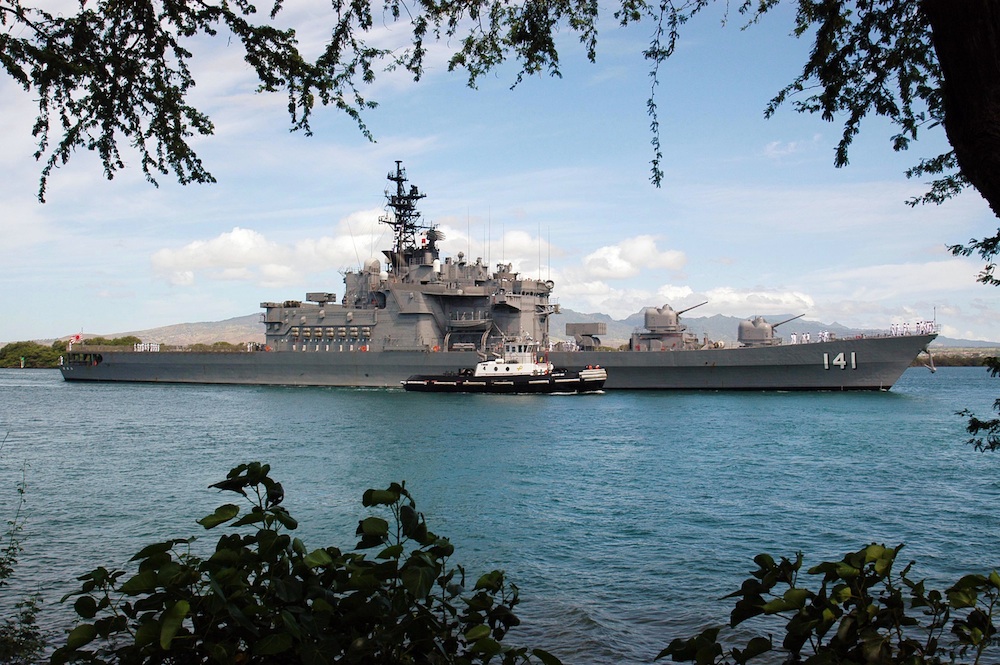
However experience has shown that three helicopters is insufficient to keep even 1 on station at all times. There is also the need for a large seaworthy vessel to operate helicopters in high sea states and convoy defense requires a certain amount of command and control space beyond that of an escort. An escort carrier is precisely what Japan need. It's too bad they can't have any carriers isn't it ?
In a COMPLETELY unrelated development. Japan has begun replacing it's large helicopter capable destroyers of the Haruna and Shirane classes with the somewhat larger 'destroyers' of the Hyuga class. These carry an official complement of 4 big helicopters in a VERY spacious hanger that can accommodate 16 or more in a pinch. Of course, as the JMSDF has explained to the legislature, these ships have a phased array radar and a battery of between 40 and 64 guided missiles (depending on which missile types are carried in their 16 missile tubes) so they are totally destroyers.
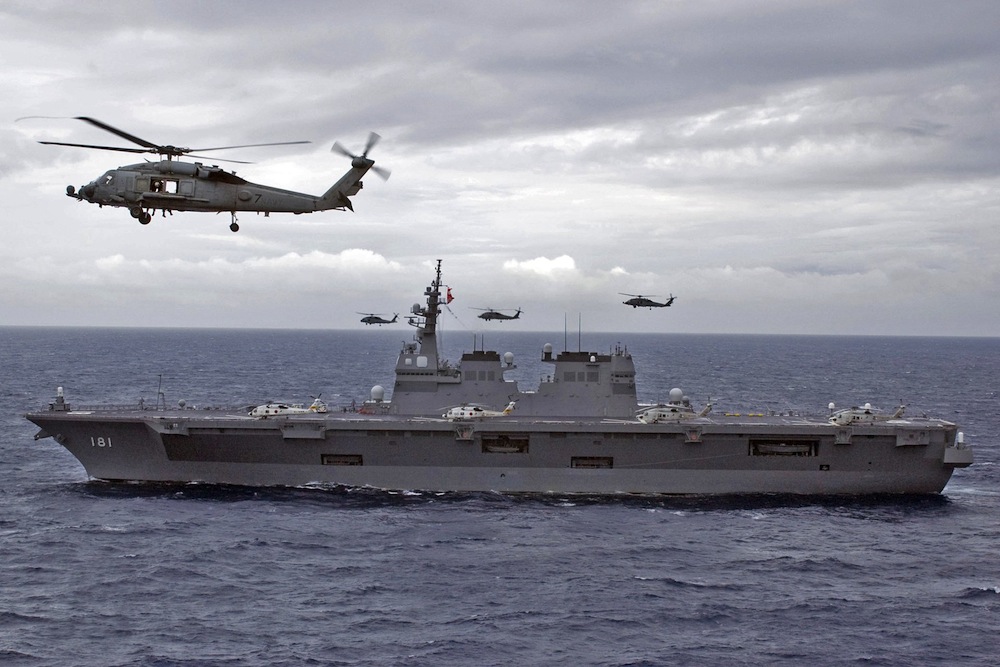
Though far larger and more capable than the proposed carrier of the 1960s these destroyers nevertheless are only a stopgap design. Since Japan cannot possess aircraft carriers the country needs to build the very best destroyers it can get as compensation. Thus the next class designated "22DDH" will be a bit larger....Actually they'll be about 19,000 tons standard and 27,000 tons fully loaded. That's about the size of a Yorktown class aircraft carrier.
Here she is drawn to scale with JDS Hyuga...
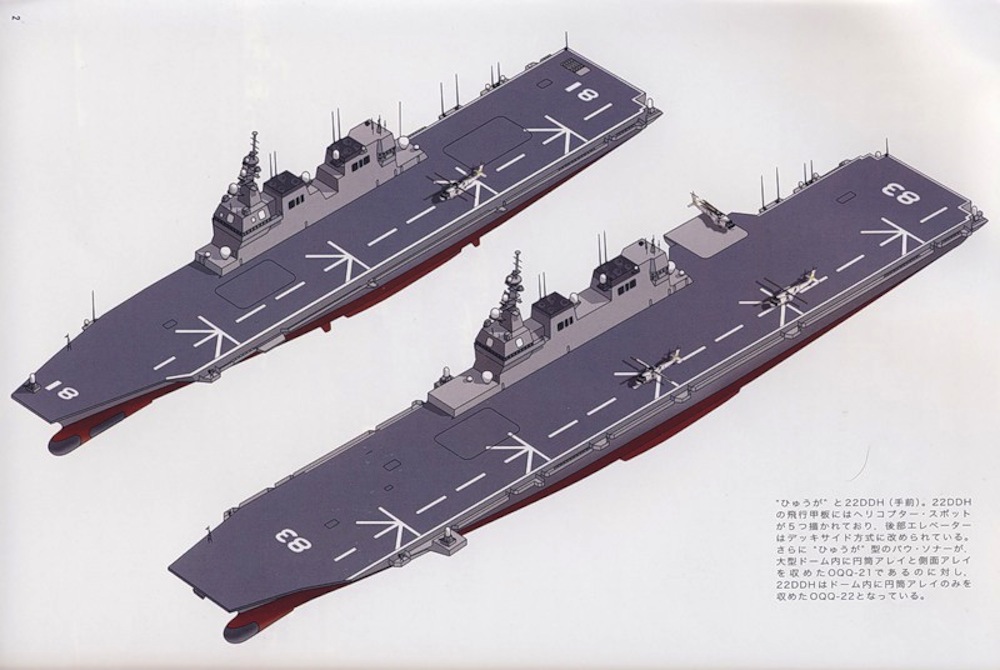
...and here the new ship is seen in comparison to three historical Japanese ships: Akagi, Shokaku and Kaga.

These ships will have, in addition to their missile batteries, 7 ASW helicopters in a VERY spacious hangar. In fact the hangar is about the size of that on an early Essex class carrier. The ship will also carry several 'search and rescue aircraft'. This SAR wing will consist of V-22 Ospreys. However, according to some sources, it will also include F-35 Bs which no doubt will bring a smile to many a stranded mariner as they drop life rafts from their bomb bays rescue equipment compartments. (I'm a bit skeptical of the F-35 reports, if only because the whole F-35 program is in disarray). The ships will also be able to carry a very large number of Ground Self Defense troops for disaster relief. This is a useful capability as Japan is prone to disasters such as volcanoes, earthquakes, tsunami's, typhoons and Chinese nationals on the Senkakus
27,000 tons might seem large for a destroyer but that's the kind of inefficiency one gets when one decides to put a bunch of helicopters on a destroyer.
It's just a terrible terrible shame that the Japanese can't have any carriers.
*don't tell the Canadians that though.
Posted by: The Brickmuppet at
11:49 AM
| Comments (7)
| Add Comment
Post contains 973 words, total size 7 kb.
July 02, 2013
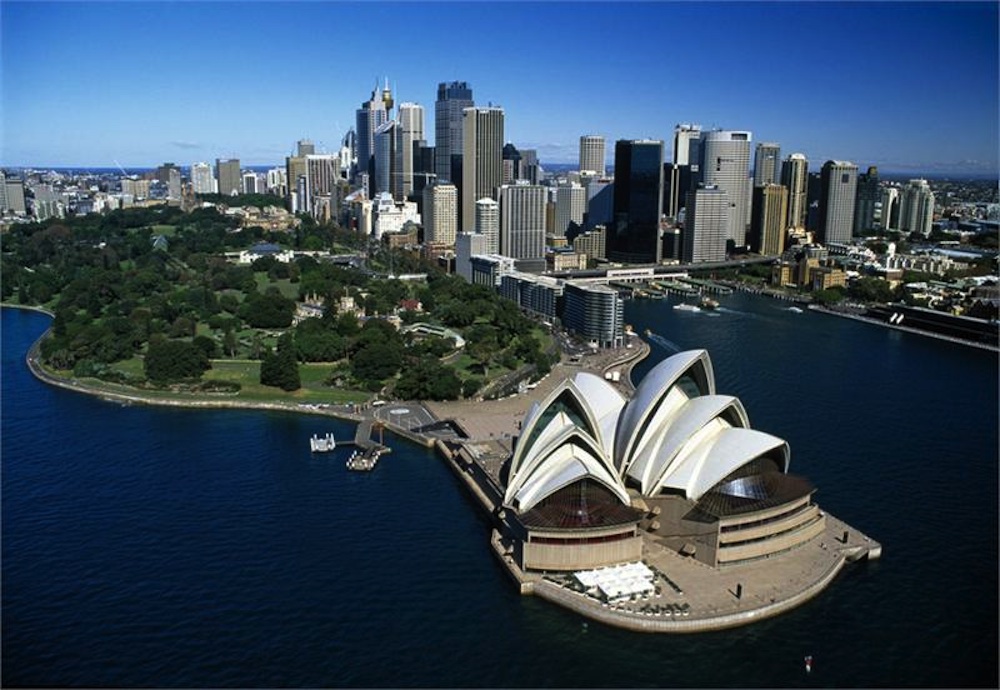
More here:
At least 150 pre-fabricated skyscrapers from Central Station to Strathfield, conveyor belts shuttling building materials above Ultimo, train lines ripped up for new ones underground, and much of the steel and concrete shipped from China, with an army of international workers assembling it all for a pittance.
The novel project could have been Sydney's had the O'Farrell government been just a bit more expansive in its thinking.
Perhaps instead of 'more expansive' 'less prudent' would be a more appropriate descriptor in that last sentence.
I've noted this tactic from China before, most notably in places like Columbo and their 'string of pearls' , but also in The Canal zone, Bahamas and San Diego.
I'm sure that none of those places will find they have listening devices, basic facilities for naval bases or changes in contract terms at any point in the future. No sirreee.
Full disclosure: That last paragraph is a combination of sarcasm, paranoia and vigilance in uncertain proportions.
Posted by: The Brickmuppet at
09:00 PM
| Comments (5)
| Add Comment
Post contains 181 words, total size 2 kb.
29 queries taking 0.1089 seconds, 89 records returned.
Powered by Minx 1.1.6c-pink.









